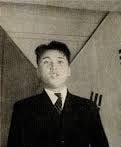My commentary today is based on Socialist Education in Korea: Selected Works of Kim Il-Sung, edited by Riley Seungyoon Park and Cambria York, and published in 2022 by Iskra Books. Located in Madison, Wisconsin, Iskra Books is the imprint of the Center for Communist Studies, an international research center dedicated to the advancement of academic and public scholarship in the fields of applied communist theory and Marxist-Leninist studies.
In a brief autobiographical preface, Riley Seungyoon Park describes himself as a Korean who was much influenced by U.S. propaganda as he was growing up in the USA. He began to critically reflect during his undergraduate education, which led him to turn to his roots to learn the true story, a process that included study of the works of Kim Il-Sung.
The book includes “Theses on Socialist Education,” which was presented by Kim Il-Sung, the historic leader of the Korean Revolution, to the 14th Plenary Meeting of the Fifth Central Committ…


